Fungi Friday. Mushroom detective
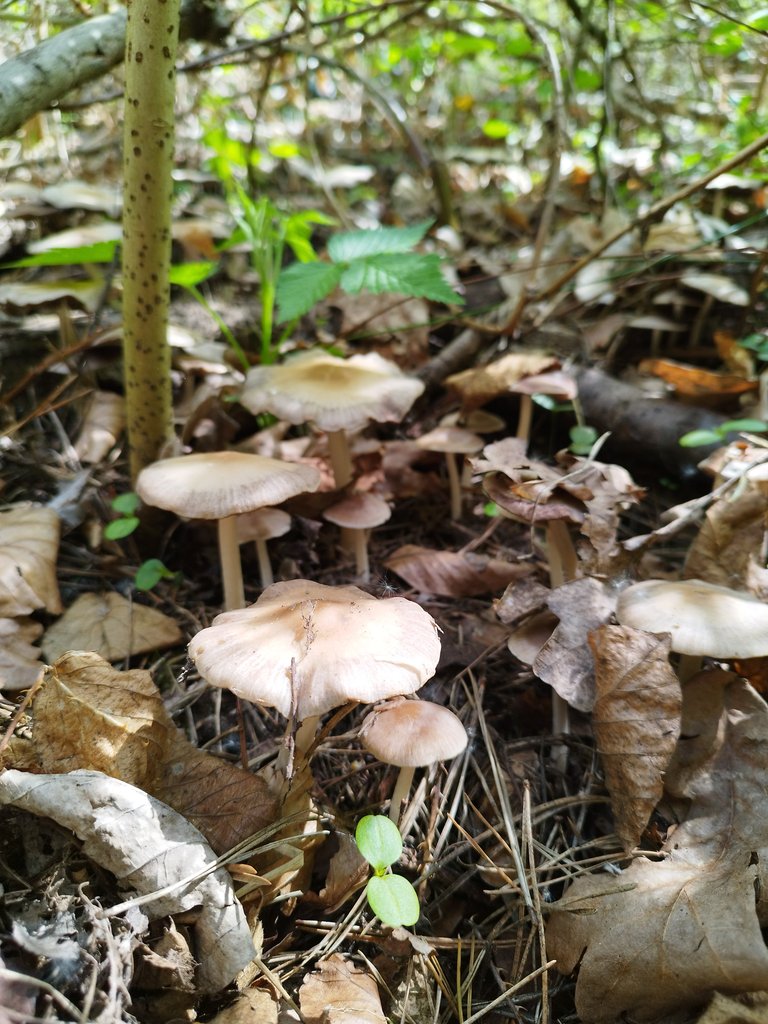
| En | Ua |
|---|---|
| Hello, friends! Lately, with the advancement of tools for identifying images — especially photos taken with a smartphone or downloaded from the internet — powered by strong artificial intelligence, I’ve discovered a new hobby. In reality, I know very few mushroom species — just the basic edible ones and a few poisonous types I remember from childhood, the ones my father (who also forages) showed me. Later, I learned a few more species through books. But around us grow hundreds of mushrooms that no one really knows — no one picks them or wonders whether they’re poisonous, because they’re simply dismissed as “toadstools,” “useless fungi,” or just tiny, unremarkable mushrooms growing in meadows, forests, or right under our feet. But now, I just take pictures of them and try to identify them using, for example, the Google Lens app. Sometimes this tool provides very accurate results — which I then try to verify myself by searching for more information online. If everything checks out, I include the mushroom’s name in a post and note that I’m fairly confident in the identification. But other times, the result is quite ambiguous — like today. | Привіт, друзі! Останнім часом, разом із розвитком інструментів для ідентифікації зображень — зокрема фотографій, зроблених смартфоном чи завантажених з інтернету, — що підтримуються потужним штучним інтелектом, я відкрив для себе нову розвагу. Насправді я знаю зовсім небагато видів грибів — лише базові їстівні та кілька отруйних, які пам’ятаю ще з дитинства, з тих, що показував мені батько (він теж збирає гриби). Пізніше я вивчив кілька нових видів завдяки книгам. Але навколо нас ростуть сотні грибів, про які ніхто нічого не знає: ніхто їх не збирає, не цікавиться, чи вони отруйні, бо вважає їх просто «поганками», «писюгами» чи якимись дрібними, непомітними грибами, які ростуть на луках, у лісах чи просто під ногами. Але тепер я просто беру, фотографую їх і намагаюся ідентифікувати, наприклад, за допомогою додатка Google Об'єктив. Іноді цей інструмент дає дуже точні результати — які я, звісно, намагаюся перевірити ще й самостійно, шукаючи інформацію в інтернеті. Якщо все сходиться, я можу написати у дописі назву гриба і зазначити, що майже впевнений у його ідентифікації. Але буває, що результат доволі суперечливий — як-от сьогодні. |
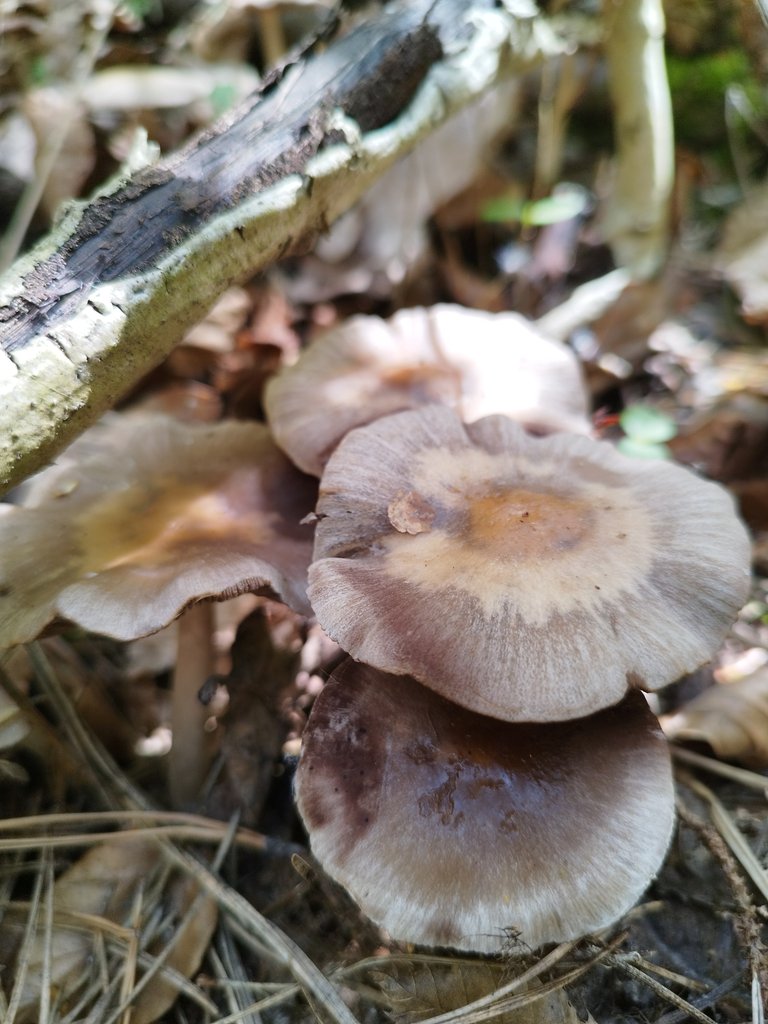
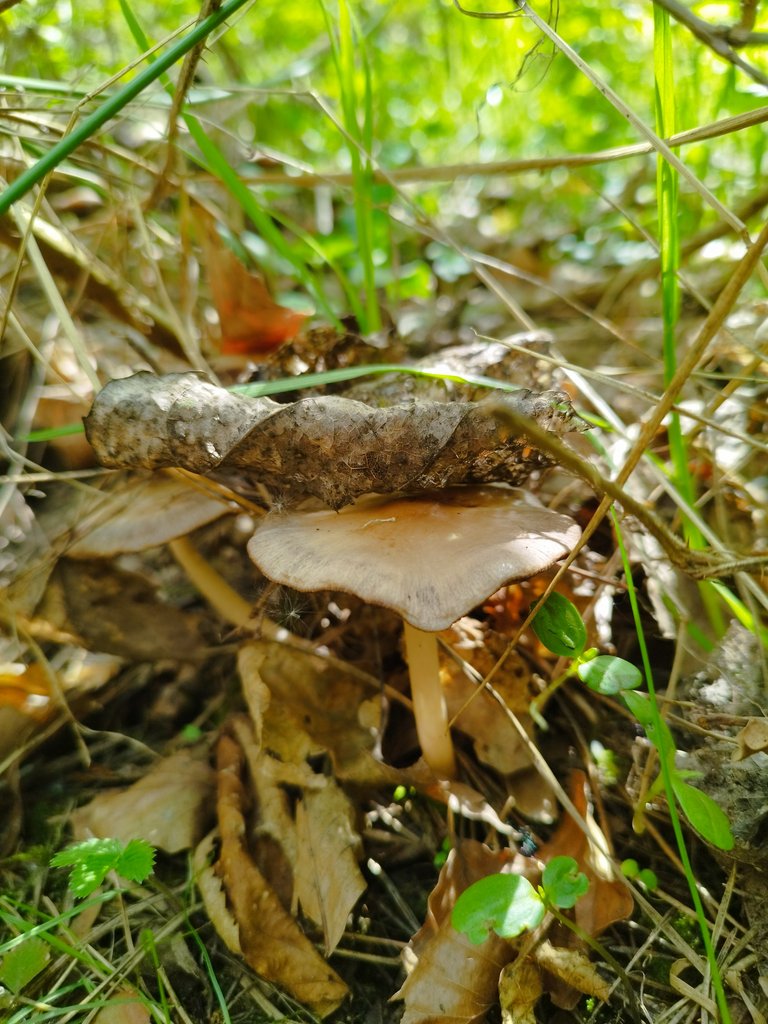
| En | Ua |
|---|---|
| While walking with my sons (the younger one in a stroller, the older one walking beside me), we passed by a pine forest. This was about two weeks ago, and that’s when I took photos of these mushrooms. Today, I decided to try identifying them. At first, Google Lens suggested they were Entoloma rhodopolium — a poisonous species. Judging by one photo alone, the resemblance was quite strong. But then I tried uploading images from different angles — and the app gave a completely different result: Psathyrella spadiceogrisea. After checking again and considering the top-down appearance of the mushrooms, I felt the second option seemed more likely. This species is considered edible (though it’s not foraged in my region), so I’m leaning toward it being a Psathyrella. I’m not entirely sure, though — I’d say I’m about 50–60% confident it’s Psathyrella spadiceogrisea, but of course, I could be wrong — as could the app. Clearly, accurate identification would require a more scientific approach, more time, and most importantly, proper expertise, which I unfortunately don’t yet have. | Під час прогулянки з синами (молодший у візочку, старший поруч ішов) ми проходили повз сосновий ліс. Це було приблизно два тижні тому, тоді я й сфотографував ці гриби. Сьогодні вирішив спробувати їх ідентифікувати. Спершу Google Об'єктив визначив їх як ентолома подавлена (Entoloma rhodopolium). Я почав шукати більше інформації — це отруйний гриб. Якщо оцінювати тільки одне фото, справді дуже схоже. Але я вирішив спробувати інші ракурси — і програма видала абсолютно інший результат: псатирела сіро-бура (Psathyrella spadiceogrisea). Перевірив ще раз — і, оцінюючи вигляд грибів згори, мені здалося, що другий варіант більш вірогідний. Цей гриб вважається їстівним (хоча в нас його ніхто не збирає), тож я схиляюся до того, що це таки псатирела. Хоча цілковитої впевненості не маю. Десь на 50–60% я схиляюся до того, що це справді Psathyrella spadiceogrisea, але, звісно, можу помилятися — як і сам додаток. Очевидно, що для точнішої ідентифікації потрібен більш науковий підхід, більше часу, а головне — кваліфіковані знання, яких у мене, на жаль, поки немає. |
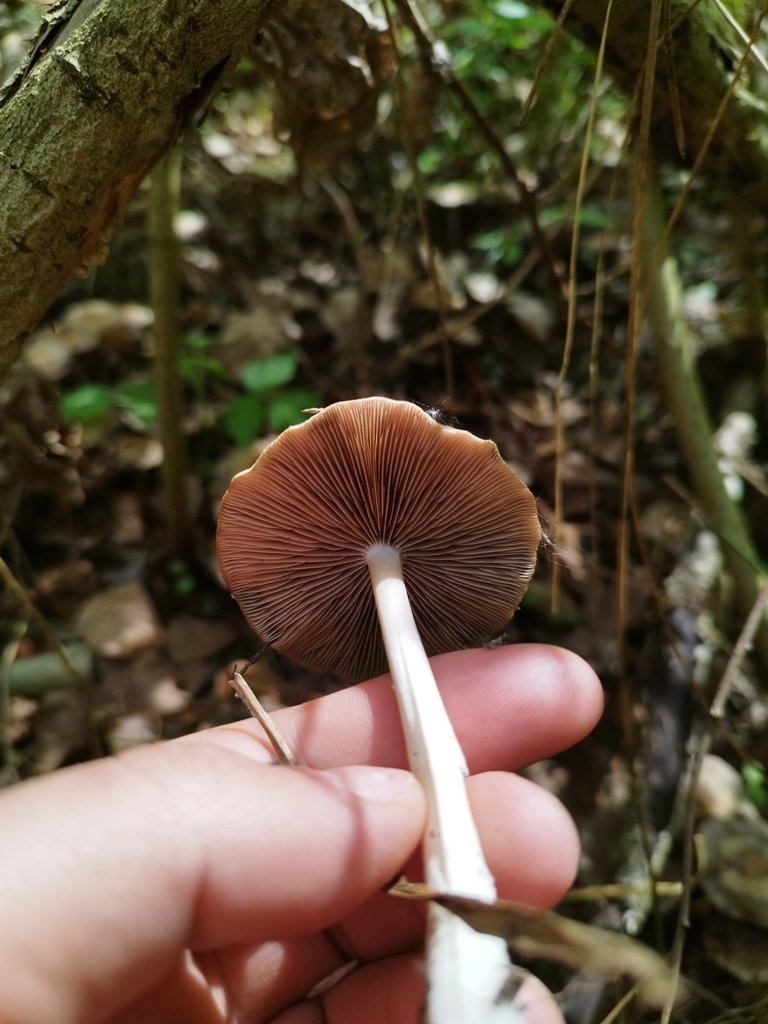

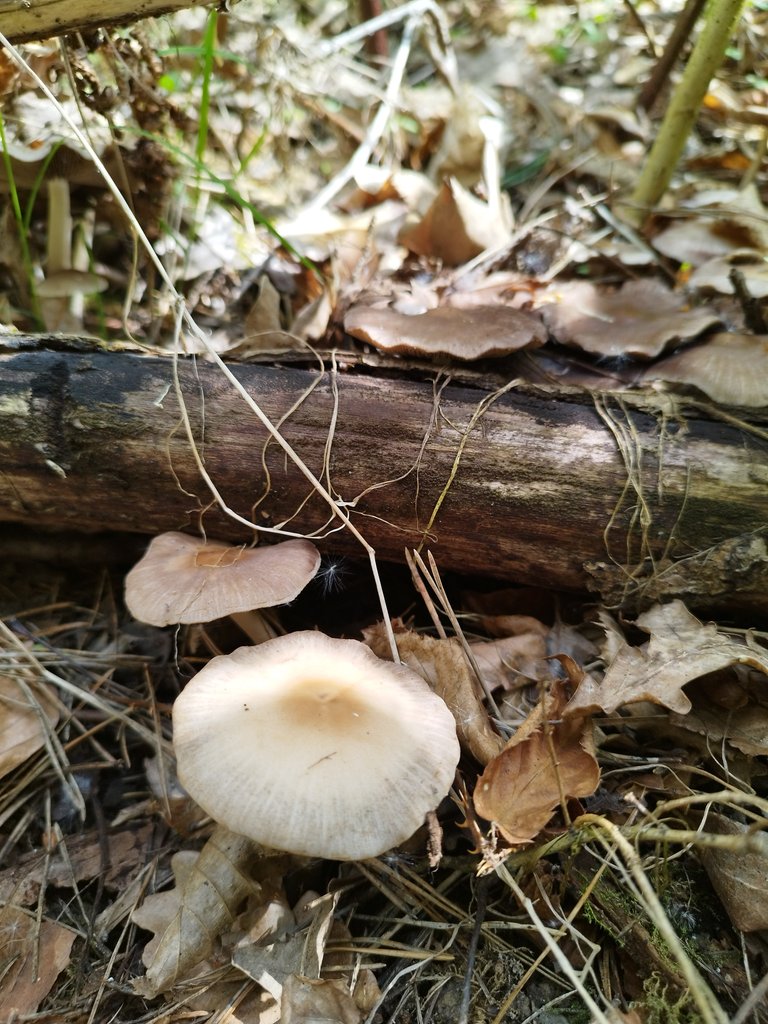
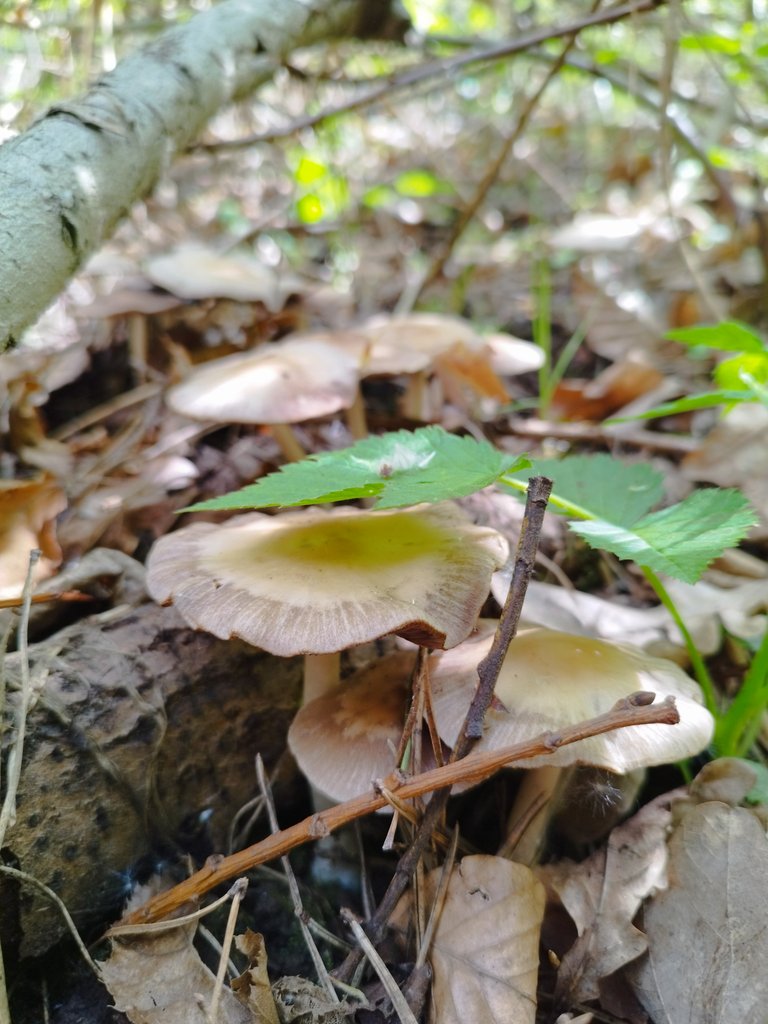
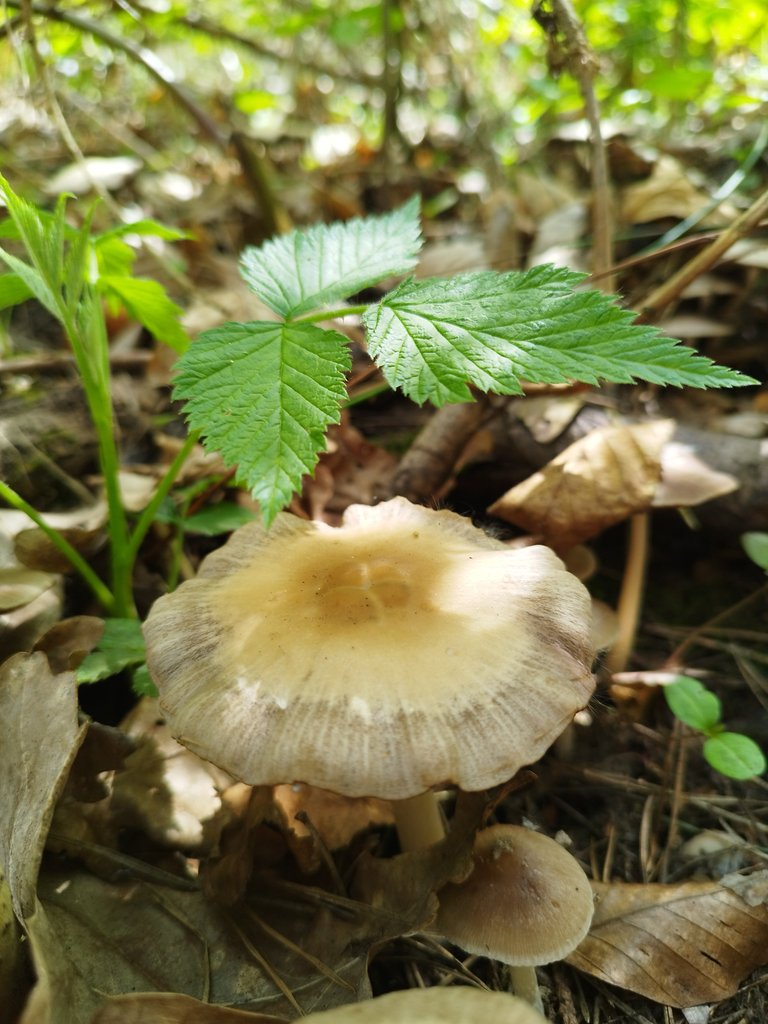
0
0
0.000
unique mushrooms, I also often use google lens to detect the types of mushrooms I find, it really helps
Absolutely, Google Lens can be such a handy tool for mushroom foraging! It’s amazing how much easier it makes identifying all the unique and unusual ones we come across.
Hello Mr. @yetaras, good morning.
It's wonderful to be able to find information about mushrooms on the web. That's fantastic.
It's great that you went for a walk and found this beautiful mushroom. I appreciate you sharing its name.
Good morning! 😊
Yes, it really is amazing how much we can learn nowadays just with a few clicks — the web is a great help, especially when it comes to identifying mushrooms. I'm glad you enjoyed the post! That little walk turned into a lovely discovery. 🍄 Thanks so much for your kind words!
I like this mushroom, it has a long stem.
So beautiful ❤️
Thank you! 😊 I thought the same — that long elegant stem makes it look almost like a tiny forest sculpture. Nature really knows how to surprise us with beauty in the smallest things! ❤️
often a photo is not enough to identify species like these. my guess is that your guess Psathyrella spadiceogrisea is correct mainly because it is so early in the season and lookalikes mainly come later.
other indicators such as odor and spore prints may help but even then sometimes only an expert with a microscope can say with certainty. even then classification is changing all the time as more research is done. best wishes
Absolutely, I completely agree — identifying mushrooms based on photos alone can be tricky, especially with genera like Psathyrella. Seasonality is often a helpful clue, and I also appreciate your note about lookalikes appearing later.And yes, taxonomy seems to shift almost as quickly as the fungi grow! Thanks for your thoughtful input and best wishes to you as well!
Hello @yetaras
To confirm your authorship of the content, could you please add the link to your Hive blog to your well-established social media account like Facebook, Instagram, or Twitter (which has not been recently created)?
After you add the link, please respond to this comment with the URL link to that website.
You can remove this mention once we confirm the authorship.
Thank you.
More Info: Introducing Identity/Content Verification Reporting & Lookup
I'm not entirely sure how this will help you, but here's a link to my Hive blog mention in my Twitter post. I hope I did everything right. And I am definitely the author of all the content I publish.
Hello.
Thanks for your reply.
This Twitter account cannot be used to verify as it does not show a lifestyle of any real person.
We would need social media that shows your lifestyle so we can verify that the person in this Hive blog matches the real person.
But I don't run such social networks. My Instagram is abandoned, and I don't have an active social life on Facebook either. I don't understand what questions you have for me? Did you find content from my page somewhere? This is not possible, because in the form in which it is published, it is published only on Hive